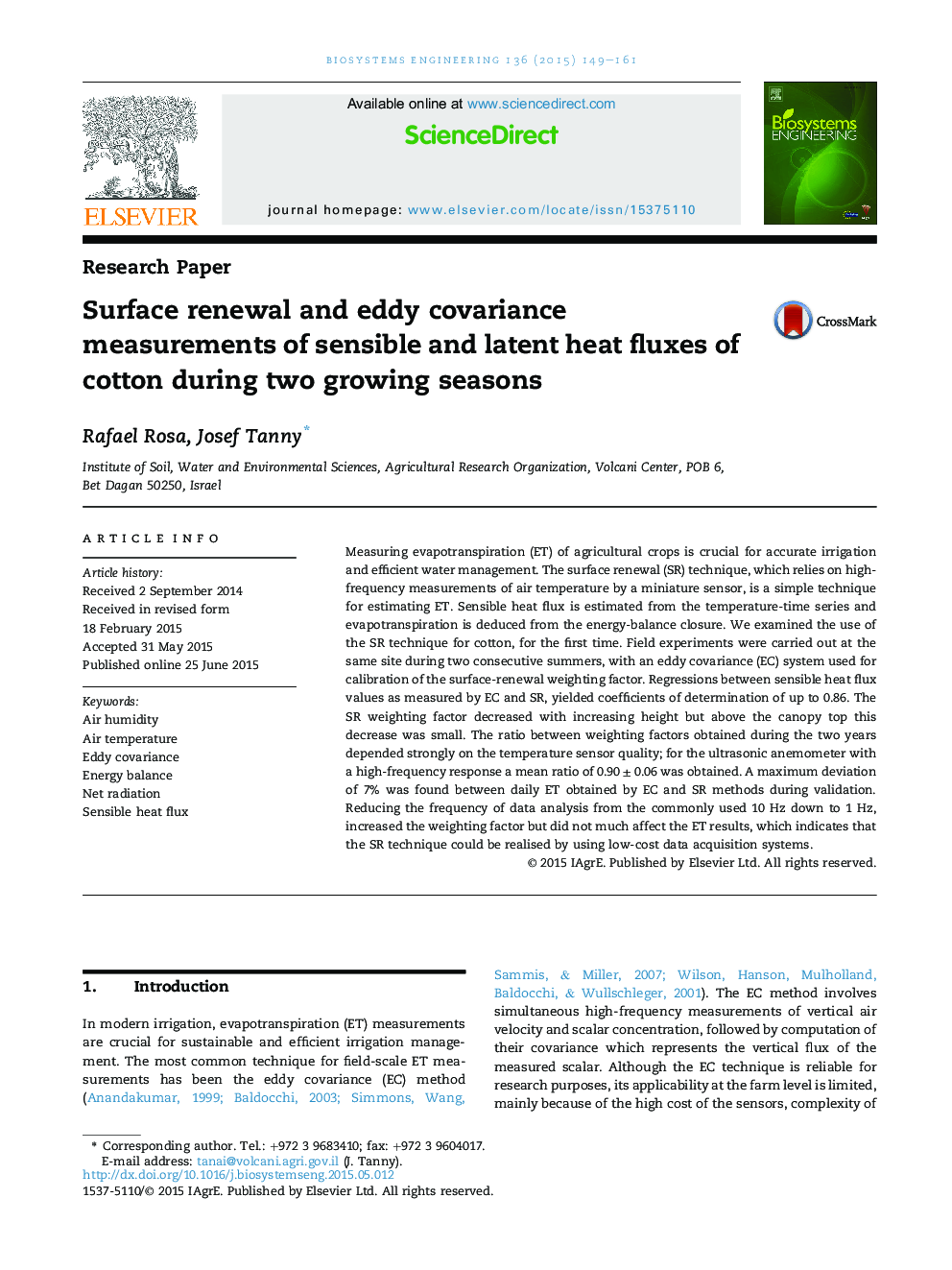| کد مقاله | کد نشریه | سال انتشار | مقاله انگلیسی | نسخه تمام متن |
|---|---|---|---|---|
| 1711025 | 1519525 | 2015 | 13 صفحه PDF | دانلود رایگان |
• Evapotranspiration of cotton was estimated by surface renewal and eddy covariance.
• Regressions between sensible heat flux by EC and SR yielded R-square up to 0.86.
• SR weighting factor decreased with height; above the canopy the decrease was small.
• ET measured by the EC technique was larger by up to 9% than that estimated by SR.
• Reducing SR data analysis frequency from 10 to 1 Hz did not affect much ET results.
Measuring evapotranspiration (ET) of agricultural crops is crucial for accurate irrigation and efficient water management. The surface renewal (SR) technique, which relies on high-frequency measurements of air temperature by a miniature sensor, is a simple technique for estimating ET. Sensible heat flux is estimated from the temperature-time series and evapotranspiration is deduced from the energy-balance closure. We examined the use of the SR technique for cotton, for the first time. Field experiments were carried out at the same site during two consecutive summers, with an eddy covariance (EC) system used for calibration of the surface-renewal weighting factor. Regressions between sensible heat flux values as measured by EC and SR, yielded coefficients of determination of up to 0.86. The SR weighting factor decreased with increasing height but above the canopy top this decrease was small. The ratio between weighting factors obtained during the two years depended strongly on the temperature sensor quality; for the ultrasonic anemometer with a high-frequency response a mean ratio of 0.90 ± 0.06 was obtained. A maximum deviation of 7% was found between daily ET obtained by EC and SR methods during validation. Reducing the frequency of data analysis from the commonly used 10 Hz down to 1 Hz, increased the weighting factor but did not much affect the ET results, which indicates that the SR technique could be realised by using low-cost data acquisition systems.
Journal: Biosystems Engineering - Volume 136, August 2015, Pages 149–161
